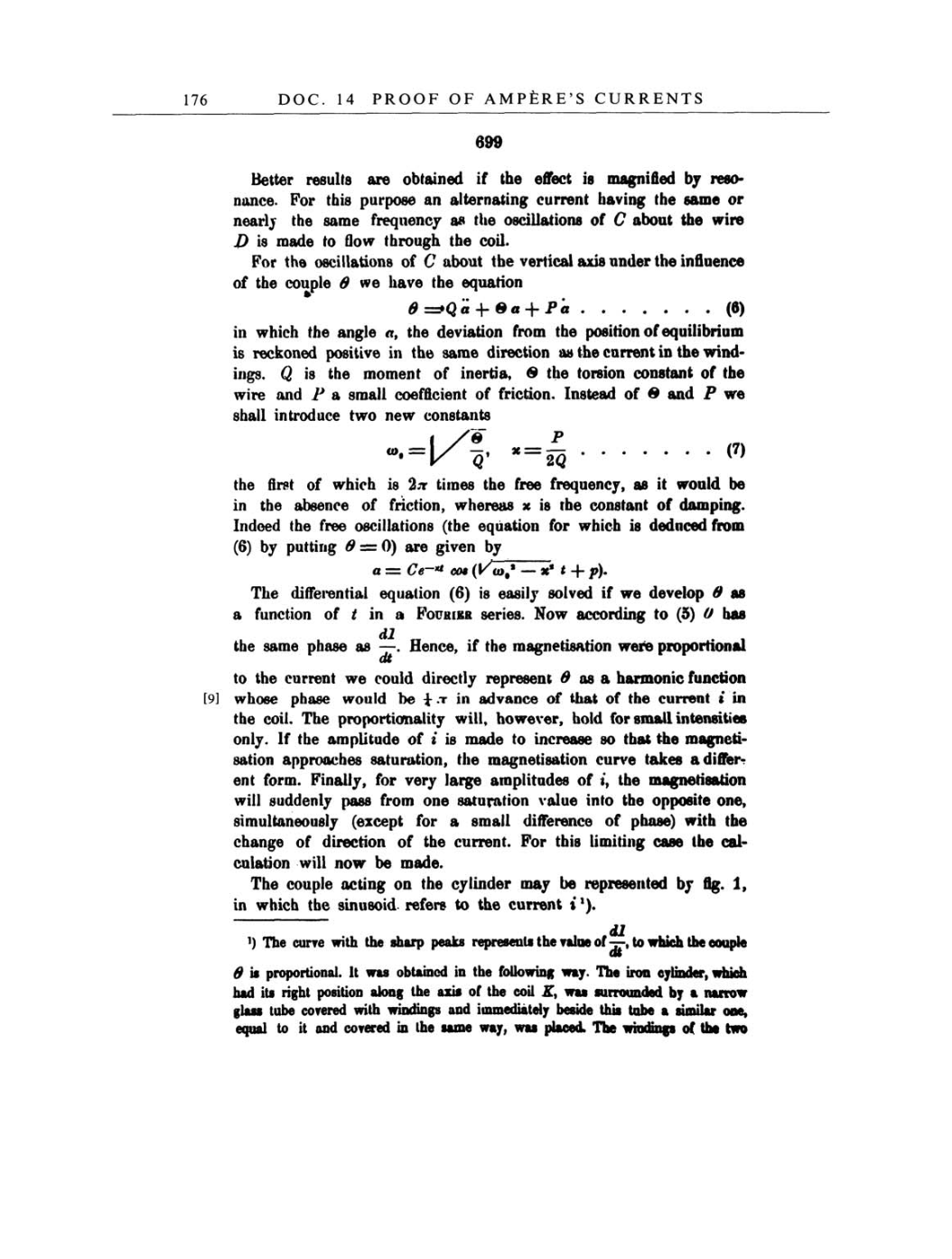176
DOC. 14
PROOF OF
AMPERE'S
CURRENTS
699
Better
results
are
obtained if the
effect is
magnified by
reso-
nance.
For
this
purpose
an alternating
current
having
the
same or
nearly
the
same
frequency as
the
oscillations
of C about the wire
D
is
made
to flow through
the
coil.
For the oscillations
of
C
about the vertical
axis
under the
influence
of
the
couple
0
we
have the
equation
6
=*Qa
4-
®
a
+
?a
(6)
in
which the
angle
a,
the deviation from
the
position
of
equilibrium
is reckoned
positive
in
the
same
direction
as
the current
in the wind-
ings. Q
is
the
moment
of
inertia,
0 the
torsion
constant of the
wire and P
a
small
coefficient
of friction. Instead of 0 and
P
we
shall introduce
two
new
constants
•=i/|
(7)
the first
of which
is
2x
times the
free
frequency, as
it
would
be
in
the
absence
of
friction,
whereas
x
is
the constant of
damping.
Indeed
the free
oscillations
(the
equation
for which
is
deduced
from
(6) by
putting
0
= 0)
are given
by
a
=
Ce-**
cot
(|/to#*
-
x*
t
+
p).
The differential
equation (6) is easily
solved
if
we
develop
6
as
a
function
of
t
in
a
Fourier
series. Now
according
to
(5)
0
has
the
same phase as
dl/dt.
Hence,
if
the
magnetisation were proportional
dt
to
the
current
we
could
directly represent
0
as
a
harmonic function
[9]
whose
phase
would be
1/4.r
in
advance of that of the
current
i
in
the coil.
The
proportionality
will, however, hold
for small intensities
only.
If
the
amplitude
of
i
is
made
to
increase
so
that the
magneti-
sation
approaches
saturation,
the
magnetisation
curve
takes
a
differ-
ent form.
Finally,
for
very large
amplitudes
of
i,
the
magnetisation
will
suddenly
pass
from
one
saturation
value into the
opposite one,
simultaneously
(except
for
a
small
difference
of
phase)
with the
change
of
direction
of the
current.
For
this
limiting case
the
cal-
culation will
now
be
made.
The
couple
acting on
the
cylinder
may
be
represented
by
fig.
1,
in which
the sinusoid refers
to
the current
i1).
dl
1)
The
curve
with the sharp
peaks represents
the
value
of
dl/dt,
to which the
couple
6
is
proportional.
It
was
obtained in
the
following way.
The iron
cylinder,
which
had its
right position along
the
axis
of
the coil K,
was
surrounded
by a
narrow
glass
tube covered
with
windings
and
immediately
beside this
tube
a
similar
one,
equal
to it and covered in the
same
way,
was
placed.
The
windings
of the two
